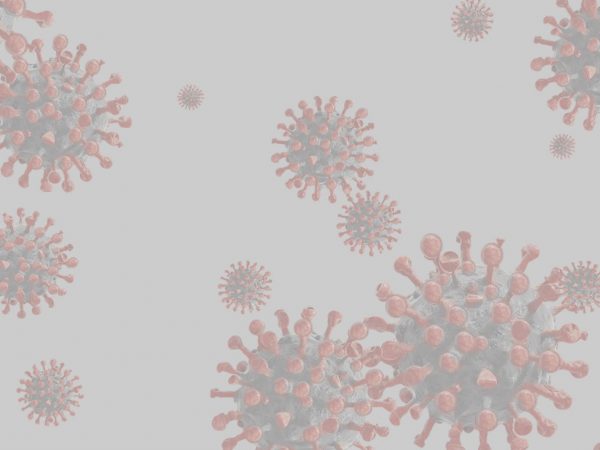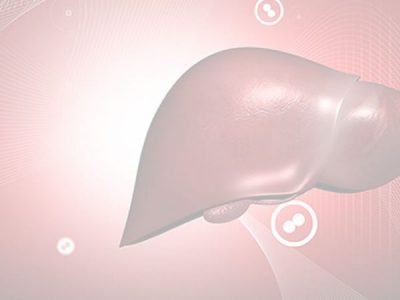Welcome to the drug interactions section for physicians and pharmacists. This section features links to clinical practice resources on identifying, checking and managing drug-drug including CYP450 (cytochrome P450), drug-herb and drug-food interactions.
KEY POINTS
- Check with at least two reputable information sources or databases to identify any possible drug interactions, as variations exist amongst drug interaction resources
- When communicating with the patient about their medicines (such as during a medication review, obtaining a drug history, or conducting a clinical assessment), it is important to assess whether the patient’s signs or symptoms are a result of an unidentified drug interaction that is occurring
- When analysing the likelihood of a drug interaction, consider any risk factors for a drug interaction (for example, drug A is being used at the maximum dose and now the patient is beginning drug B, which is known to increase the plasma concentration of drug A and the patient is age 70)
- Potential drug interactions can be caused by various risk factors such as polypharmacy, multiple prescribers, narrow therapeutic range drugs, long half-life drugs, high-risk drugs, patient’s disease state, age (elderly or young), renal impairment, liver impairment, cardiac failure and genetic predispositions
- Possible ways for handling a drug interaction are a) avoiding the drug-drug combination b) prescribing a lower dose c) monitoring the patient for adverse effects or side effects including providing safety netting advice on when to seek help should a problem arise d) taking the interacting medicine at another time of the day or e) using an alternative drug with no interaction risk
LIST OF 20 CLINICALLY SIGNIFICANT DRUG-DRUG INTERACTIONS
Here are some examples of clinically significant drug interactions. Please note this list is not exhaustive.
- Omeprazole/esomeprazole with clopidogrel
- Phosphodiesterase type-5 (PDE5) inhibitor with a nitrate
- Benzodiazepine with an opioid
- ACE inhibitor/angiotensin II receptor antagonist with a diuretic and a non-steroidal anti-inflammatory drugs (NSAID)
- Pethidine/dextromethorphan/tramadol with a monoamine oxidase inhibitor (MAOI)
- Digoxin with amiodarone
- Methotrexate with trimethoprim/co-trimoxazole
- Verapamil with a beta-blocker
- Warfarin with an azole antifungal
- Warfarin with an NSAID
- Warfarin with tramadol
- Phenytoin with folic acid
- Clarithromycin with simvastatin
- Amiodarone with erythromycin
- Methotrexate with an NSAID
- ACE inhibitor with a potassium supplement
- ACE inhibitor with a potassium-sparing diuretic
- Clozapine with carbamazepine
- Theophylline with fluvoxamine
- Clarithromycin with eplerenone
Clinically Relevant Drug-Drug Interactions in Primary Care
Many interactions are theoretical or clinically trivial; however, some may have serious or life-threatening consequences. This review focuses on the most common drug interactions likely to be encountered in the primary care setting.
- Source: aafp.org
- Clinical Resource: Journal Article
- Register to Access Content: No
Drug Interactions (1): General Principles
This is the first of 2 bulletins on drug interactions which outlines the principles of drug interaction and suggests ways to minimise the risk associated with them.
Drug Interactions (2): Frequently Asked Questions
This is the second of 2 bulletins on drug interactions which reviews some frequently asked questions on drug interactions received by the NMIC.
- Source: stjames.ie
- Clinical Resource: Medicines Information Centre Bulletins
- Register to Access Content: No
Clinically Important, Common Drug-Drug Interactions
The table below describes potential management strategies for 16 DDIs. It is intended to serve as an educational tool and is not intended to be a guide for medical practice. The table lists the effect (e.g., pharmacokinetic, pharmacokinetic, clinical) and mechanism of the potential DDIs in addition to the propensity for related drugs to interact and options for clinical management.
- Source: crediblemeds.org
- Clinical Resource: Table
- Register to Access Content: No
Avoiding the triple whammy in primary care: ACE inhibitor/ARB + diuretic + NSAID
Angiotensin converting enzyme (ACE) inhibitors, angiotensin-II receptor blockers (ARBs), diuretics and nonsteroidal anti-inflammatory drugs (NSAIDs) all have the potential to decrease renal function. When any of these medicines are prescribed together the patient’s risk of acute kidney injury (AKI) is increased, and when all three are prescribed at once the risk is greatest. This article provides prescribers with strategies for avoiding the “triple whammy” and guidance on how to manage adverse effects if they do occur.
- Source: bpac.org.nz
- Clinical Resource: Journal Article
- Register to Access Content: No
The Triple Whammy – A Dangerous Trio
Triple Whammy – ‘three simultaneous deleterious blows with compounded effect’. This combination of medicines can result in significant patient harm; the rate of fatalities from renal failure is estimated at 10%.
- Source: saferx.co.nz
- Clinical Resource: Bulletin
- Register to Access Content: No
Cytochrome P450 Part 1: Multiplicity and Function
This review is an update of the CYP450 superfamily of drug metabolising enzymes. It comprises a brief history of CYP450 research, outlines the standard P450 nomenclature system, and describes CYP450 multiplicity, structure and function.
Cytochrome P450 Part 2: Genetics of Inter-Individual Variability
This second article in the CYP series describes current understanding of genetic variability in the major drug metabolising CYP enzymes, nomenclature used to describe variant CYP genes, and the clinical significance of such variability.
Cytochrome P450 Part 3: Impact of Drug–Drug Interactions
This final article in the series describes the issues and principles that are important in identifying and assessing drug interactions that involve CYP enzymes.
- Source: shpa.org.au
- Clinical Resource: Journal Articles
- Register to Access Content: No
Indiana University School of Medicine
Cytochrome P450 Drug Interaction Table
This table is designed as a hypothesis testing, teaching and reference tool for physicians and researchers interested in drug interactions that are the result of competition for, or effects on the human cytochrome P450 system.
The table contains lists of drugs in columns under the designation of specific cytochrome P450 isoforms. A drug appears in a column if there is published evidence that it is metabolized, at least in part, via that isoform. It does not necessarily follow that the isoform is the principal metabolic pathway in vivo, or that alterations in the rate of the metabolic reaction catalyzed by that isoform will have large effects on the pharmacokinetics of the drug.
- Source: iu.edu
- Clinical Resource: Table
- Register to Access Content: No
Drug Interactions Checker – For Drugs, Food & Alcohol
Drugs.com
The Drug Interaction Checker explains the mechanism of each drug interaction, the level of significance of the interaction (major, moderate or minor), and in certain cases, can provide the recommended course of action to manage the interaction. The Drug Interaction Checker will also display any interactions between your chosen drug(s) and food.
- Source: drugs.com
- Clinical Resource: Database
- Register to Access Content: No
Drug Interactions Checker
Medscape
- Use the search field above to look up prescription or OTC drugs, and herbal supplements
- Add a full drug regimen and view interactions
- Source: medscape.com
- Clinical Resource: Database
- Register to Access Content: No
Drug Interaction Checker
DrugBank
DrugBank’s DDI checker allows for up to 5 drugs at a time to be checked against one another for potential drug-drug interactions. For any interactions uncovered, the culprit drug pair is provided alongside a relative severity level
- Source: drugbank.com
- Clinical Resource: Database
- Register to Access Content: No
Drug Interactions Check
Epocrates
- Source: epocrates.com
- Clinical Resource: Database
- Register to Access Content: Yes – registration is FREE
Interactions: Herbs, Botanicals & Other Products
Memorial Sloan Kettering Cancer Center Database
A pharmacist and botanicals expert manages and continually updates the database with assistance from other MSK Integrative Medicine Service experts, providing you with objective and evidence-based information that can be helpful in judging a product’s:
- traditional and proven uses
- potential benefits
- possible adverse effects
- interactions with other herbs or medicines
- Source: mskcc.org
- Clinical Resource: Database
- Register to Access Content: No
Food–Drug Interactions
Which Ones Really Matter?
The purpose of this article is to equip pharmacists with a better understanding of drug-food interactions. This article differs from traditional reviews on this topic because the food substance is categorized individually, with the interacting drugs discussed under each heading. While there are hundreds of drug-nutrient interactions reported in the literature, the aim here is to focus on those that are more common and clinically significant.
- Source: uspharmacist.com
- Clinical Resource: Journal Article
- Register to Access Content: No
Alcohol-Medication Interactions: Potentially Dangerous Mixes
- Types of alcohol-medication interactions
- Checking alcohol-medication interactions
- Examples of common medications known to interact negatively with alcohol
- Important: Prescribing presents an alcohol screening opportunity
- For further information about alcohol-medication interactions
- Source: nih.gov
- Clinical Resource: Article
- Register to Access Content: No
Sex, drugs and alcohol
Drug interactions of concern to consumers
Patients often express concerns about interactions between their medicines and alcohol and any illicit drugs that they may consume. Doctors and pharmacists are also often asked about interactions, especially short courses of antibiotics, which might reduce the efficacy of oral contraceptives.
- Source: nps.org.au
- Clinical Resource: Journal Article
- Register to Access Content: No
Drug – Grapefruit Interactions (Review)
Grapefruit juice is a potent inhibitor of the intestinal cytochrome P-450 3A4 system (specifically: CYP3A4 – mediated drug metabolism) which is responsible for the first-pass metabolism of many medications. This interaction can lead to increases in bioavailability and corresponding increases in serum drug levels. In many cases, the increased serum drug levels can produce some readily observable symptoms.
- Source: globalrph.com
- Clinical Resource: Review
- Register to Access Content: No
Drug Interactions with Vitamins and Minerals
In this article, common drug interactions with vitamins and minerals are discussed, along with suggestions on how the pharmacist should manage these interactions.
- Source: uspharmacist.com
- Clinical Resource: Journal Article
- Register to Access Content: No
The hidden problem of herb-drug interactions
Potentially harmful interactions between herbs and prescription medicines are common, yet healthcare professionals often do not ask about herbal remedies when prescribing and patients do not volunteer that they are taking them. This article discusses the types of herb-drug interaction that can occur and how they can be recognised and avoided.
- Source: euwiley.com
- Clinical Resource: Journal Article
- Register to Access Content: No
Drug interactions with complementary medicines
Health professionals are expected to be familiar with common and clinically significant complementary medicine interactions or at least know where to look them up. Knowing the dynamic and kinetic interactions associated with commonly used complementary medicines helps to identify the risk of drug interactions. Although information on complementary medicine interactions is not readily provided by the manufacturers, evidence is available by way of case reports, independent research and web based resources, which have increased in recent years. Collectively, these data make interactions with complementary medicines largely predictable and therefore preventable.
- Source: nps.org.au
- Clinical Resource: Journal Article
- Register to Access Content: No
Common Herbal Dietary Supplement–Drug Interactions
This review focuses on drug interactions with herbal dietary supplements, which are defined as supplements containing whole plant or plant extracts that are consumed as powder, capsule, tablet, or liquid formulations.
- Source: aafp.org
- Clinical Resource: Journal Article
- Register to Access Content: No
HIV Drug Interactions
University of Liverpool
We provide a clinically useful, reliable, comprehensive, up-to-date, evidence-based drug-drug interaction resource, freely available to healthcare workers, patients and researchers.
- Source: hiv-druginteractions.org
- Clinical Resource: Various
- Register to Access Content: No
- Source: nccc.ucsf.edu
- Clinical Resource: Table
- Register to Access Content: No
Antiretroviral Interactions
Drug Name/Class:
- Acid suppressing Agents
- Analgesics: opioids, opioid substitution, non-narcotics
- Anticonvulsants
- Anti-infectives: azoles and macrolides
- Anti-infectives: TB drugs
- Hepatitis C drugs
- Cardiovascular drugs: antihypertensives, digoxin
- Cardiovascular drugs: antiplatelets, anticoagulants
- Cardiovascular drugs: lipid-lowering agents
- Diabetes medications
- Genitourinary drugs: erectile dysfunction, pulmonary arterial hypertension
- Psychotropics
- Recreational drugs
- Vitamins, herbals, body-building supplements
- Source: hivclinic.ca
- Clinical Resource: Tables
- Register to Access Content: No
HEP Drug Interactions
University of Liverpool
This web site was established in 2010 by members of the Department of Pharmacology at the University of Liverpool to offer a resource for healthcare providers, researchers and patients to be able to understand and manage drug-drug interactions.
- Source: hep-druginteractions.org
- Clinical Resource: Various
- Register to Access Content: No
The Faculty of Sexual and Reproductive Healthcare Guidance: Drug Interactions
- Drug interactions with hormonal contraception
- Drug interactions between HIV antiretroviral therapy and contraception
- Source: fsrh.org
- Clinical Resource: Guidance
- Register to Access Content: No
Quick guide to drug interactions with smoking cessation
Many interactions between tobacco smoke and medications have been identified. Note that in most cases it is the tobacco smoke—not the nicotine—that causes these drug interactions. Tobacco smoke interacts with medications through pharmacokinetic (PK) and pharmacodynamic (PD) mechanisms. PK interactions affect the absorption, distribution, metabolism, or elimination of other drugs, potentially causing an altered pharmacologic response.
- Source: nsw.gov.au
- Clinical Resource: Guide
- Register to Access Content: No
Resources last checked: 16/07/2024



